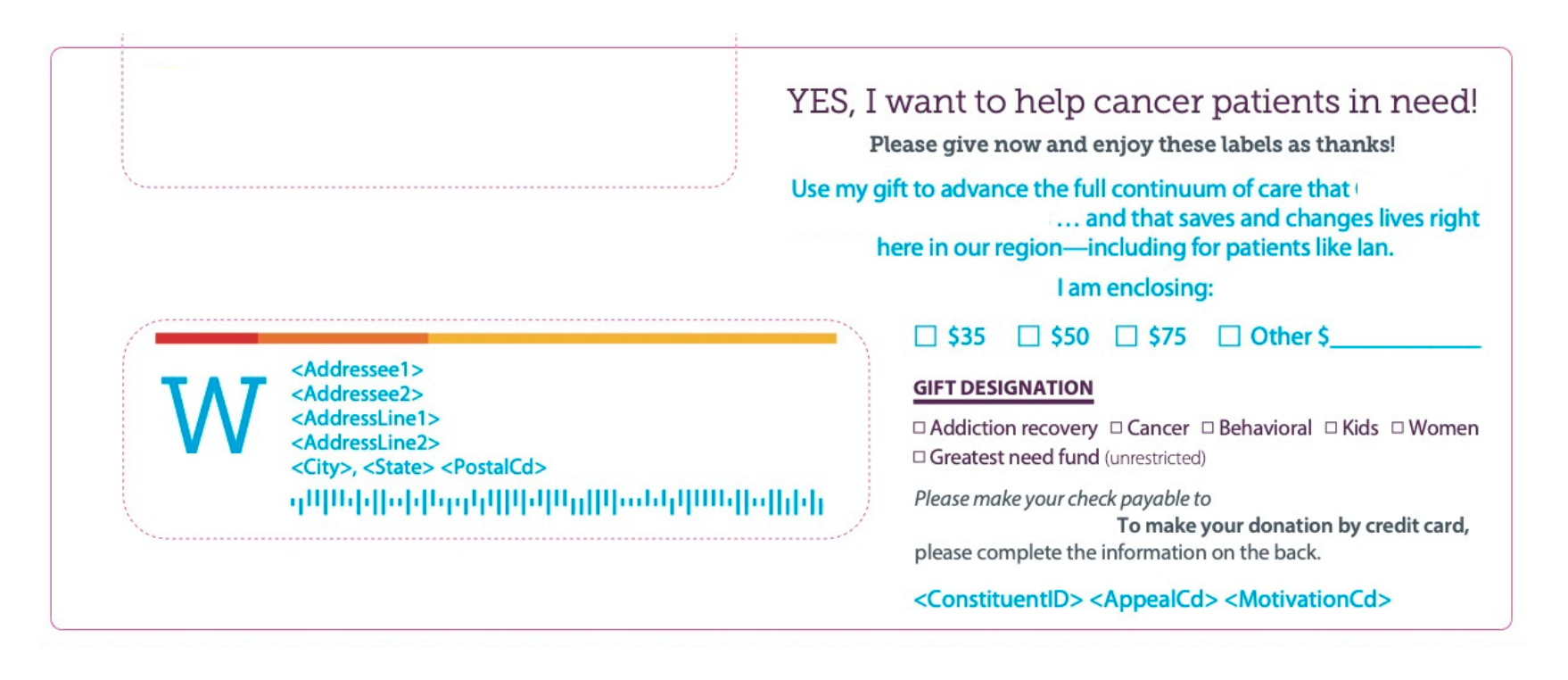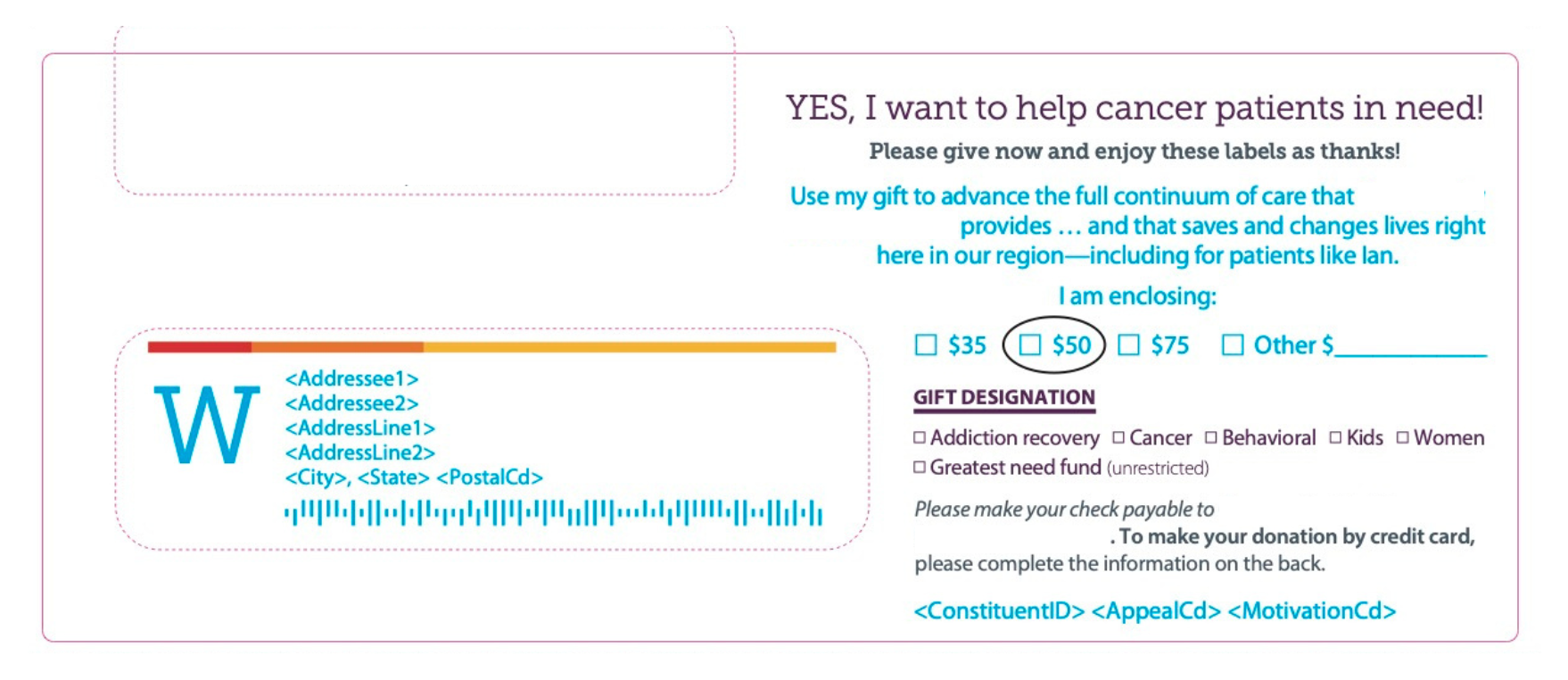6 Tips for Taking Your Acquisition Testing to the Next Level

Testing is essential to a successful direct-response donor acquisition strategy because it helps you identify what works and what doesn’t when it comes to attracting donors and raising more money. In fact, one of our favorite acronyms is ABT. Always Be Testing.
By testing different approaches, such as messaging, tactics, or audience segments, you can identify what resonates with potential donors and what doesn’t and make informed decisions about how to proceed.
Most fundraisers associate direct response campaigns with direct mail. While that’s certainly a critical component, direct response also includes any outreach that elicits an immediate response from your donor. Your email campaign, landing pages, and even social media ads all count, allowing you to take an omni-channel approach to your outreach.
The most effective direct-response campaigns are personalized and compelling. Prospective donors should feel like this outreach is targeted at them and no one else. Every bit of your copy should compel them to act.
We know it can be overwhelming to decide which elements of your campaign to test, so we’ve outlined six principles that should guide your approach below.
Best Practices for Testing Your Direct Response Efforts
Testing can come in all shapes and sizes: however, all tests are not created equal. Here are some key things to remember when you’re testing aspects of your acquisition program:
1. Have a Goal
When you’re testing, it’s important to have a specific goal. You’re trying to move the needle on response rate, average gift, frequency, retention, etc. Or, start smaller: Do you want more people to open your emails? Do you need to increase the number of responses to your postcard?
Don’t test until you know what area of the program you want to impact. Do some research, develop your hypothesis, and use it as an anchor to create your test.
2. Focus on One Variable
Testing takes time. If you change too many things from one iteration to the next, you’ll have no way to pinpoint which variable led to the improved response or decreased performance. So, only test one thing at a time. Ideally, the variable you focus on should be directly related to your goal. For example, you can test:
- Email subject line
- Plain text vs graphic design
- The use and type of photos
- The outer envelope
- Calls to action
- Font sizes
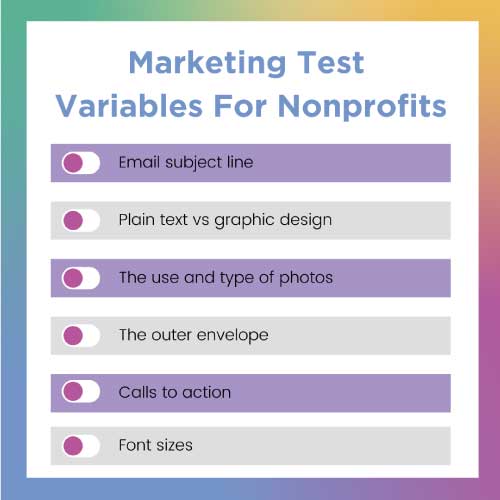
If you have the budget, you can consider multi-variate testing. However, you would need an analyst to set up the testing and interpret the results.
3. Aim for Significance
Because testing involves cost and risk, it’s critical to set up your testing appropriately. This will yield statistically significant results that can be acted upon.
Universe size will be important. The larger the test sample, the more statistical confidence you will have in your results. It’s also important to establish a control panel of similar makeup (volume and segmentation) so you can measure the test results against it. If you aren’t sure what size test sample you need, use an online calculation tool.
4. Account for Cost
When evaluating results (especially on a net impact), be sure you are using rollout costs since the test cost per piece can be much higher. Also, there are different ways to approach testing depending on your budget and your hypothesis:
- Low-Cost, High-Impact Testing: This is done within the same housing of the package and can be something as simple as a gift array test (if you are trying to drive up the average gift size). This is a low-cost to implement. If you hit and it works, you’ve essentially increased your average gift.
- High-Cost, High-Impact Testing: This type of testing typically results in a breakthrough. It costs more, but the upside could be significant if and when you hit.
5. Target the Right Audience
The list you use — whether for direct mail, email, or social media targeting — will directly impact the success of your campaign. You might start by sending the same message to your entire list but then assess the responses and look for trends.
To save some time (and money), lean on what others have found about generational preferences. For instance, a study by the U.S. Postal Service showed that 75% of millennials said they feel special when they receive personal mail. This will allow you to do some segmenting from the beginning so you can focus on other variables.
6. Don’t Be Afraid to Lose
Keep in mind that not every test will be a winner. In fact, more often than not, the test loses against your tried-and-true control package. But testing is still worthwhile because, when you do find a winner, the positive impact on your program can be exponential. You may even be able to carry your findings across more than one campaign.
Direct Response Testing Samples
A National Disease Research Foundation Tests Urgency Language
With a goal in mind, our team tested the power of urgent language on carrier envelopes for a national disease research foundation. Our first appeal saw a 10.3% increase in response rate, and our second test saw an even greater improvement with a 20% increase. Personalization is important, but urgency can be a game-changer for fundraising success.
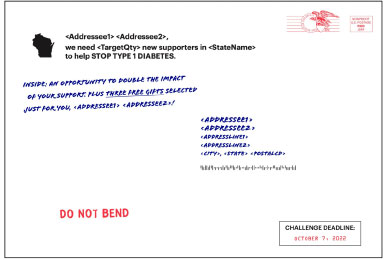
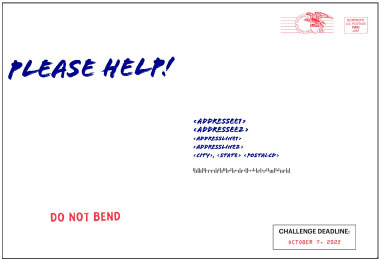
A Faith-based Arts and Culture Organization Tests a Low-Dollar Ask Array
Working with a faith-based arts and culture organization, we tested a theory with a lower dollar ask array. Our test array consisted of $20, $30, $50, and an open-ended amount, while our control array was $20, $40, and $60. Despite the uncertain economic climate, we saw a significant 8% lift in response rate with the test array, and the average gift remained consistent. The results show that sometimes, asking for less can lead to more generosity.

A Regional Healthcare Network Tests Suggested Ask and Personalization
We tested our fundraising tactics for a regional healthcare network by experimenting with a circled mid-ask on an envelope and adding personalized name labels. The results were impressive, with a 50% increase in response rate, albeit with a small sample size. The average gift remained consistent at around $35 for the test and $39 for the control.
